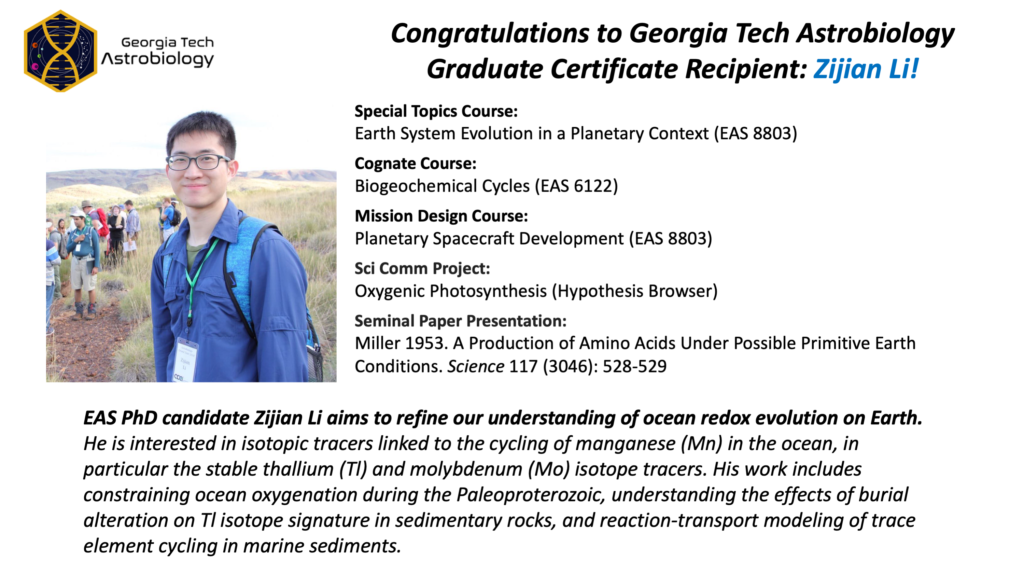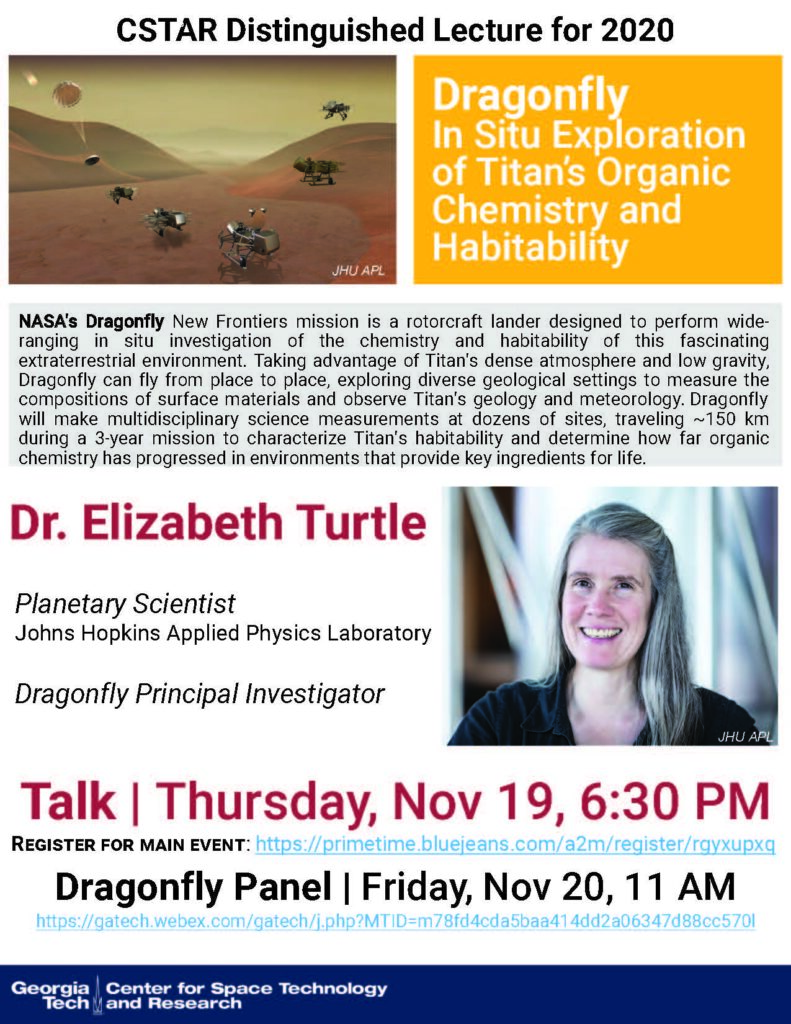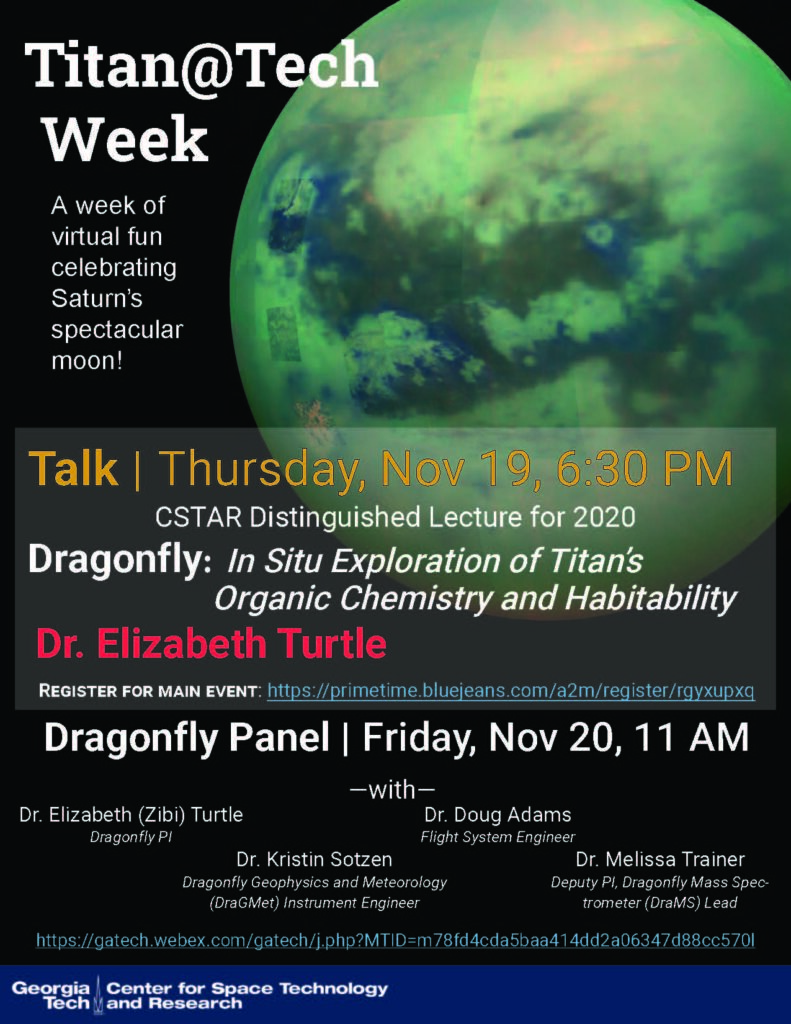2021 Exploration and Origins Colloquium
2020 Explorigins Colloquium Research Abstracts
Back to 2020 Colloquium Main Page
Presentations | Posters
A selection of permitted presenter titles and abstracts have been published below.
Plenary Speakers
Dr. Christopher E. Carr
Dr. Mariel Borowitz
Presentations
Dr. Micah Schiable — Chemistry and Biochemistry
Kelvin Smith — Chemical and Biomolecular Engineering
Petar Penev — Biological Sciences
Dr. Anthony Burnetti
Aaron Pital
2020 Explorigins Colloquium Poster Abstracts
Presentations | Posters
Posters
| Poster No. | Name | Poster Title | Department | Exploration or Origins? |
| 1 | Anna Simpson | Landscape Ecology Applied to Astrobiology: Lessons learned from FELDSPAR | Chemistry and Biochemistry | Exploration |
| 2 | Bhanu Kumar | Computation and Analysis of Invariant Tori Near Resonances in the Planar Elliptic Restricted Three-Body Problem | Mathematics | Exploration |
| 3 | Bridget Wiley | VERNE: Thermal Management System | Aerospace Engineering | Exploration |
| 4 | Frances Bryson | Initial Design & Considerations for the Vertical Entry Robot for Navigating Europa (VERNE) Sample Handling System | Mechanical Engineering | Exploration |
| 5 | Frances Bryson | Vertical Entry Robot for Navigating Europa: Initial Design of Vehicle Structures | Mechanical Engineering | Exploration |
| 6 | Kenneth Seaton | Examining Organic Biomarker Survivability in Enceladus Plume Capture Conditions using Laser-Induced Projectile Impact Testing | Chemistry and Biochemistry | Exploration |
| 7 | Mohamed Nassif | Drill Design Considerations for Use on Europa | Aerospace Engineering | Exploration |
| 8 | Philip Szot | Vertical Entry Robot for Navigating Europa – Systems Team | Aerospace Engineering | Exploration |
| 9 | Sara Pierson | Vertical Entry Robot for Navigating Europa (VERNE): Communications and Data Handling | Aerospace Engineering | Exploration |
| 10 | Ashley Hanna | Science System for Vertical Entry Robot for Navigating Europa (VERNE) | Earth and Atmospheric Sciences | Exploration/Origins |
| 11 | Abigail Johnson | Potential Life Strategies in Gas Clathrates | Earth and Atmospheric Sciences | Origins |
| 12 | Ayanna Jones | Utilizing Systems Analysis to Understand the Chemical Language of the Rhizosphere | Chemistry and Biochemistry | Origins |
| 13 | Brooke Rothschild-Mancinelli | Understanding Containment: Life Unbounded? | Chemistry and Biochemistry | Origins |
| 14 | Jay Haynes | Structure and Activity of the Ancestral Ribosome | Chemistry and Biochemistry | Origins |
| 15 | Martin C | Acylated Peptide Building Blocks Polymerize to Form Supramolecular Assemblies in Response to Environmental Cycling | Chemistry and Biochemistry | Origins |
| 16 | Rebecca Guth-Metzler | Probing ancestral ribosomal iron utilization through Fe2+ in-line cleavage | Chemistry and Biochemistry | Origins |
| 17 | Tyler Roche | Robust Ribonucleosides: A Pathway to Ribose from Simple Sugars via Ketose Intermediates | Chemistry and Biochemistry | Origins |
| 18 | Vahab Rajaei | Polymer Evolution using Alkyl Alcohols in the Absence of Water | Chemistry and Biochemistry | Origins |
Code of Conduct
PSAS: X-Ray Diffraction (XRD) for the Analysis of Materials
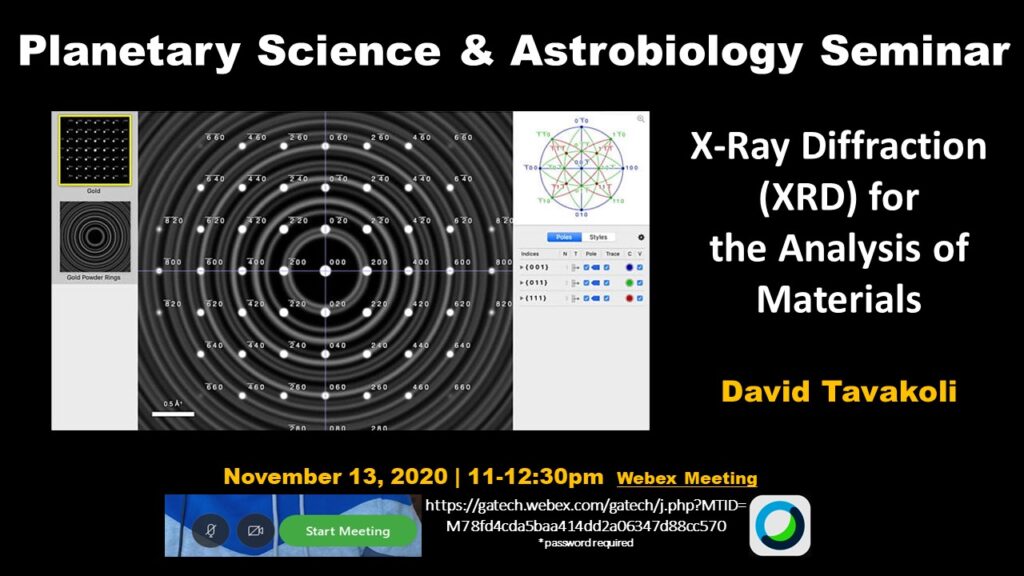
XRD is a powerful technique to perform qualitative and quantitative analyses of materials and is most widely used for the identification of unknown crystalline materials. Determination of unknown solids is critical to studies in geology, environmental science, and material science to name but a few. When X-Rays contact a crystal, a series of reflections are produced that are unique and characteristic for each phase, similar to a fingerprint. It is a method that does not require large amounts of material, even very small amounts of material can be measured with special holders, and is non-destructive. This presentation will be focused on how XRD is used to measure materials from domestic and extraterrestrial sources.
Titan@Tech
PSAS: Space Weather: The Science, its Effects and Mitigation
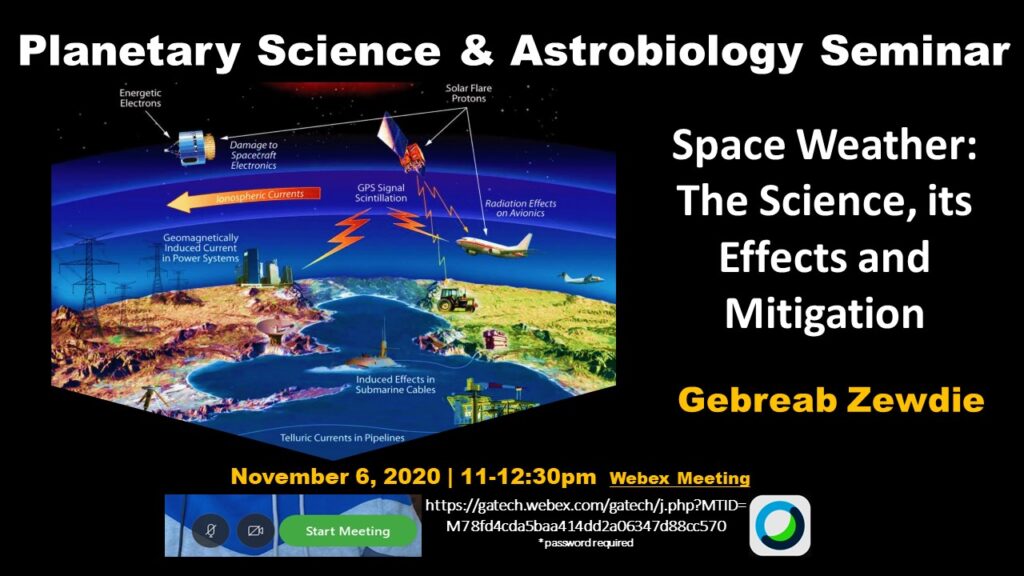
Solar flares can produce x-rays that affect satellite communication in the near-Earth environment, it can degrade or block communication signals. Solar energetic particles can penetrate satellite electronics and cause electrical failure. Coronal Mass Ejections (CME’s) can cause Geomagnetic Storms at Earth and induce extra currents at the ground that can degrade power grids and other infrastructure. All these events are termed space weather and need to be studied, forecasted, and notified in advance to mitigate its effects. In this seminar, we will talk about space weather, its effect, and forecasting capabilities to mitigate its effects.
PSAS: Enceladus Orbilander: Designing Flagship-class Mission Concepts for the Next Decadal Survey
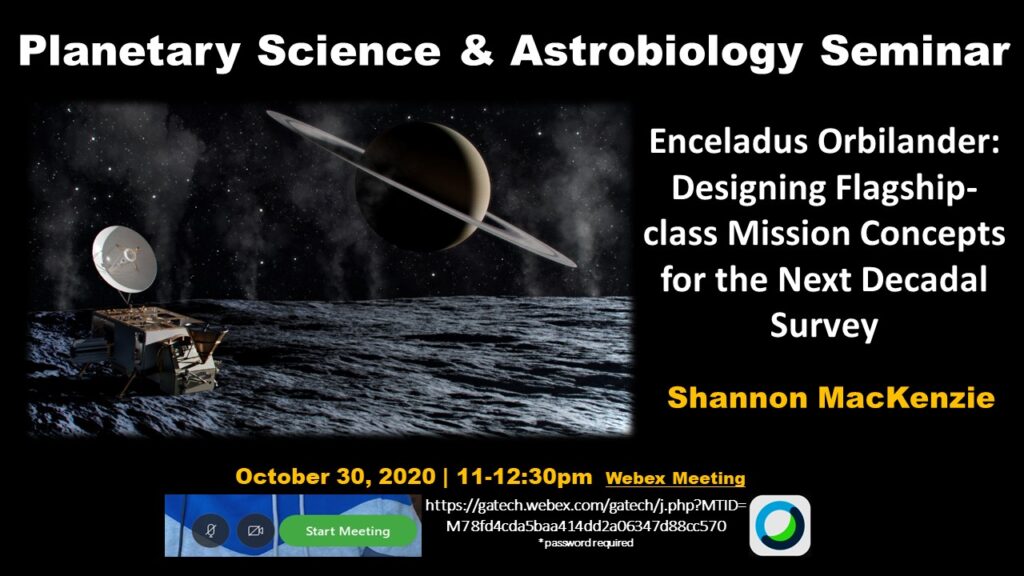
Cassini revealed Saturn’s moon Enceladus as the host of a subsurface ocean where the key factors of habitability appear to be collocated. A return mission is needed to determine if that habitability potential supports life, but how should such a search for life be conducted? What biosignatures might we target? What geochemical and geophysical investigations would provide the context most useful for interpreting biosignature searches? In preparation for the 2023-2032 Decadal Survey, we explored what Flagship-class (>$2B) missions answering these questions might look like. In this talk, I’ll describe how we defined the driving science goals and objectives, selected a representative payload, and evaluated the science value of different architectures. I’ll then present the result of our study, Orbilander, a mission concept where a single spacecraft first orbited and then landed, and why it represents a compelling option for returning to Enceladus to search for life.

